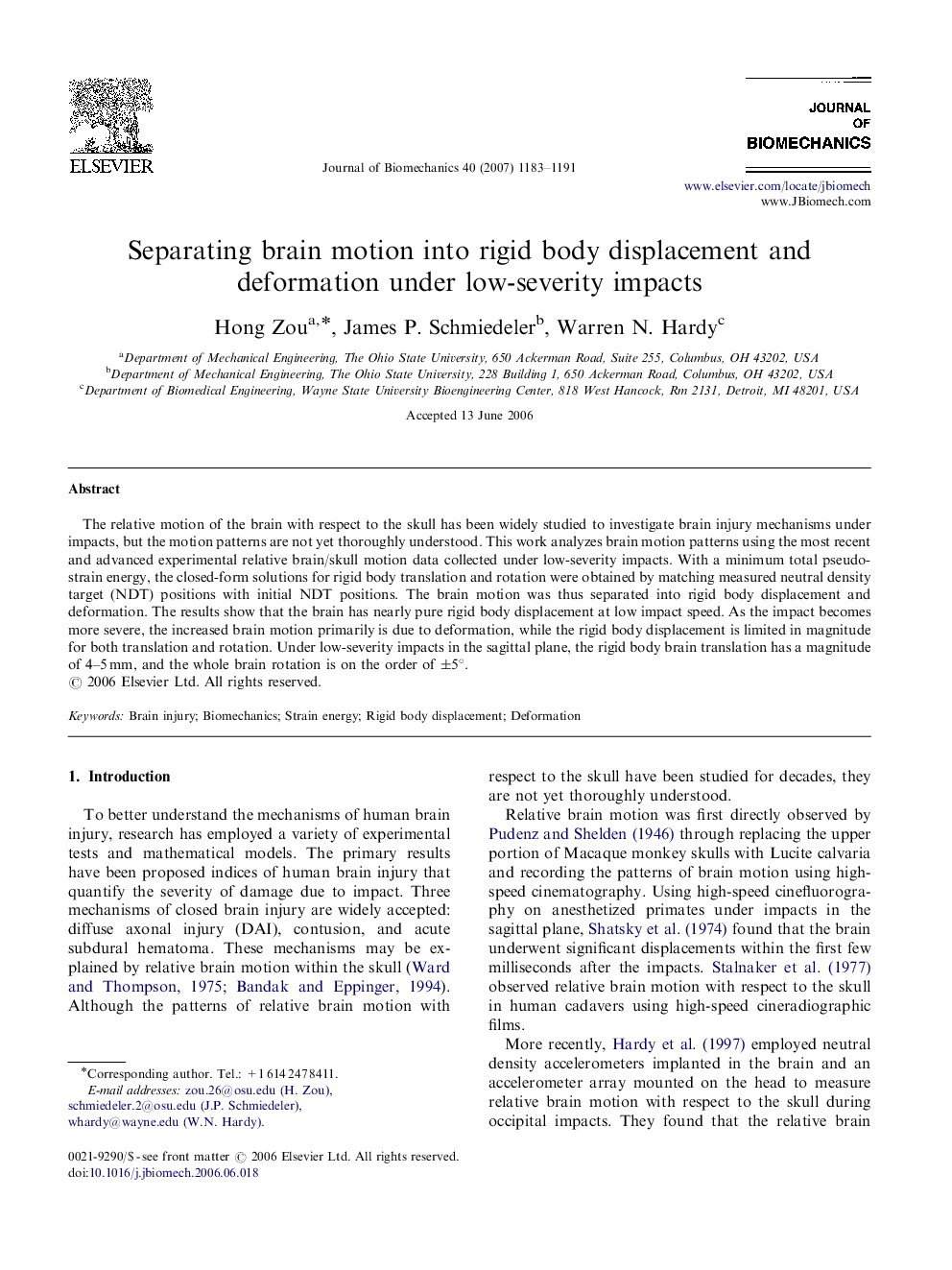| Article ID | Journal | Published Year | Pages | File Type |
|---|---|---|---|---|
| 874529 | Journal of Biomechanics | 2007 | 9 Pages |
The relative motion of the brain with respect to the skull has been widely studied to investigate brain injury mechanisms under impacts, but the motion patterns are not yet thoroughly understood. This work analyzes brain motion patterns using the most recent and advanced experimental relative brain/skull motion data collected under low-severity impacts. With a minimum total pseudo-strain energy, the closed-form solutions for rigid body translation and rotation were obtained by matching measured neutral density target (NDT) positions with initial NDT positions. The brain motion was thus separated into rigid body displacement and deformation. The results show that the brain has nearly pure rigid body displacement at low impact speed. As the impact becomes more severe, the increased brain motion primarily is due to deformation, while the rigid body displacement is limited in magnitude for both translation and rotation. Under low-severity impacts in the sagittal plane, the rigid body brain translation has a magnitude of 4–5 mm, and the whole brain rotation is on the order of ±5∘±5∘.
